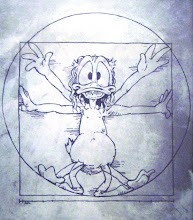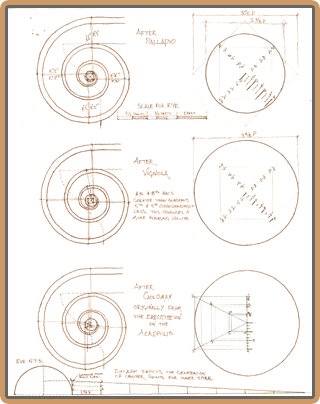"...the 1967 document Eucharisticum Mysterium, section 53 advises the placement of the tabernacle in a separate chapel."This is absolutely false. Actually, it's almost true, which is a special kind of falsity. This is indicative of the kind of misreading of texts that has lead many to misunderstand the wisdom and beauty of the spirit and letter of the Second Vatican Council, yet this kind of mishandling of the real intent is so widespread that people often take it for fact without second thought. So the question is, do you know where the tabernacle belongs in a church? Even the most orthodox often get confused in their answer. So if you're interested in my take on the Church's stance, read on.
The actual TEXT (including the context of the whole section on The Place for the Reservation of the Holy Eucharist):
The particular text which is in question is this: "It is therefore recommended that, as far as possible, the tabernacle be placed in a chapel distinct from the middle or central part of the church"52. The Tabernacle
Where reservation of the Blessed Sacrament is permitted according to the provisions of the law, it may be reserved permanently or regularly only on one altar or in one place in the church. Therefore, as a rule, each church should have only one tabernacle, and this tabernacle must be safe and inviolable.53. The Blessed Sacrament Chapel
The place in a church or oratory where the Blessed Sacrament is reserved in the tabernacle should be truly prominent. It ought to be suitable for private prayer so that the faithful may easily and fruitfully, by private devotion also, continue to honor our Lord in this sacrament. It is therefore recommended that, as far as possible, the tabernacle be placed in a chapel distinct from the middle or central part of the church, above all in those churches where marriages and funerals take place frequently and in places which are much visited for their artistic or historical treasures.54. The Tabernacle in the Middle of the Altar or in Some Other Part of the Church
"The Blessed Sacrament should be reserved in a solid, inviolable tabernacle in the middle of the main altar or on a secondary altar, but in a truly prominent place. Alternatively, according to legitimate customs and in individual cases to be decided by the local Ordinary, it may be placed in some other part of the church which is really worthy and properly equipped."Mass may be celebrated facing the people even though there is a tabernacle on the altar, provided this is small yet adequate."
55. A Tabernacle on an Altar where Mass is Celebrated with a Congregation
In the celebration of Mass the principal modes of worship by which Christ is present to His Church are gradually revealed. First of all, Christ is seen to be present among the faithful gathered in His name; then in his Word, as the Scriptures are read and explained; in the person of the minister; finally and in a unique way (modo singular) under the species of the Eucharist. Consequently, because of the sign, it is more in keeping with the nature of the celebration that the Eucharistic presence of Christ, which is the fruit of the consecration and should be seen as such, should not be on the altar from the very beginning of Mass through the reservation of the sacred species in the tabernacle.56. The Tabernacle in the Construction of New Churches and the Adaptation of Existing Churches and Altars
The principles stated in nos. 53 and 55 ought to be kept in mind in the building of new churches.The adaptation of existing churches and altars may take place only according to the principles laid down in no. 24 of this instruction.
57. The Means of Indicating the Presence of the Blessed Sacrament in the Tabernacle
Care should be taken that the presence of the Blessed Sacrament in the tabernacle is indicated to the faithful by a tabernacle veil or some other suitable means prescribed by the competent authority.According to the traditional practice, a lamp should burn continually near the tabernacle as a sign of the honor paid to the Lord.
To spell it out, this does NOT mean that a separate Eucharistic Adoration Chapel is required. What is required is that it be truly prominent and given due respect within the framework of the hierarchical arrangement of the liturgical furnishings, is capable of keeping the Body of Our Lord safe, and yet does not become a distraction or hindrance to participation within the framework of the Liturgy of the Eucharist (by physically getting in the way, or by calling too much attention to itself out of proportion to the rest of the sacred furnishings esp. the altar).
Part of the confusion is determining what is actually meant by "distinct from the middle or central part of the church". Just in case paragraph 54 didn't already clarify things, I submit to you some diagrammatic doodles to illustrate what is meant by paragraphs 52-54 in spirit and letter (and by extension, what is not intended) Click on the images to enlarge them.

And just in case anyone has difficulties moving from the universal to the particular, here's the same idea using a traditional cruciform plan and the plan from the Cathedral of Christ the Light.

Placing the tabernacle in the middle or central part of the church creates a physical and visual obstacle to the altar, places disproportionate prominence upon it (makes it appear more important than the altar), and can create an unsafe situation should someone come along and want to do harm to His Body, not to mention that it gets in the way of processions especially those in weddings and funerals (Sorry, Grandma, but we can't get Grandpa's coffin to the altar because Jesus is blocking the way). And since these things are what Eucharisticum Mysterium is trying to prevent, this scheme should and must be avoided.
Placing the tabernacle outside of the church is satisfactory because it keeps the Body of Our Lord safe, and also allows for private and intimate adoration, and obviously doesn't get in the way. But because only one tabernacle is allowed, this scheme is lacking because the prominence of the place of reservation is lost or diminished at best. Often because of renovations, this means that reservation takes place a great distance from the altar, and this is unfortunate because the altar and tabernacle should be visually and spacially linked to reinforce the fact that they are metaphysically and theologically connected.
Placing the tabernacle along the perimeter of the church but axially centered is best because all of the requirements are met. In an axially or linear plan, this is best along the major axis, in a radial plan this is not as important, but the geometry of the plan should help dictate the best location.
 So you see, misreading the text (either purposefully or accidentally) of the directives of Vatican Council II and other pertinent documents of the Apostolic See can be detrimental, because mistaken liturgical design consultants use that misinformation to (either purposefully or accidentally) move Our Lord out of his home and into the Guesthouse where no one remembers He's there, or if they do, they think He is visiting their home.
So you see, misreading the text (either purposefully or accidentally) of the directives of Vatican Council II and other pertinent documents of the Apostolic See can be detrimental, because mistaken liturgical design consultants use that misinformation to (either purposefully or accidentally) move Our Lord out of his home and into the Guesthouse where no one remembers He's there, or if they do, they think He is visiting their home.The Cathedral of Christ the Light actually does a fantastic job of dealing with this issue. By placing the tabernacle behind the altar and yet viewable from the adoration chapel behind the sanctuary, there is an intimate, private adoration chapel AND the tabernacle is prominently displayed, with the small caveats DISCUSSED YESTERDAY. (and this is in fact an increasingly popular solution, and similar to the one which I proposed for the cathedral):
I'm glad we had this opportunity to look at these doodles. It helps shed light on some of the various good (and perhaps even orthodox) qualities of the Cathedral.
And yet, if you turn the image 90 degrees, almost all of the alien qualities about the Cathedral come to light as well.

UPDATE: HERE ARE THE FOLLOW-UP AND RELATED ARTICLES:
Cathedral of Christ the Blight (written prior to visiting the Cathedral)
There is No Prayer There (commentary on the exterior of the Cathedral)
Cathedral of Christ the Blight part II (replies to objections to my commentary)
Raiders of the Lost Art (commentary on the interior of the Cathedral and its art)



3 comments:
A large church like Christ the Light that might see significant activity: their placement of the tabernacle in a wall between the nave and a separate chapel: that's not a bad solution.
I find curious your attempt to make congruent the absolute principle of falsity and a close approximation of the truth.
For the record I never said, either in my post, or on my own analysis on my web site that a separate chapel is required. A separate chapel is a wholly orthodox approach.
I will point out that the tabernacle, as a liturgical furnishing, is a minor aspect of a church. It is a significant focus for devotion, probably the most important. In the judgment of many Catholics, that means a balance must be struck. In the best of situations, that means careful study and prayerful discernment, and you have ample material here that would help a parish get that started.
There is no theological justification for referring to the nave and/or sanctuary, and chapel as having a certain hierarchy of home value for Christ. Strictly speaking, Christ is really present not in rooms, but in the elements of the Sacrament, and in other aspects of liturgy.
Todd
PS Word Freak is an excellent book, don't you think?
I loved today's post! It was super well written and very clear. And without being smug, you pointed out what the common misunderstandings are and why they are wrong and then very clearly, using (I assume) all the pertinent text (so that it couldn't be misconstrued), went on to explain how the documents should be correctly interpreted and thus able to be properly delegated. It was so helpful to have the drawings- in fact they made me laugh, because it becomes so obvious, once it's on paper. It was also good that you gave 3 options with their explanations too, and not just an "either/or", or an "only this", situation explanation. You are clearly in your element!
In addition to axial and radial, how would you handle a traditional antiphonal space?
Todd
Post a Comment